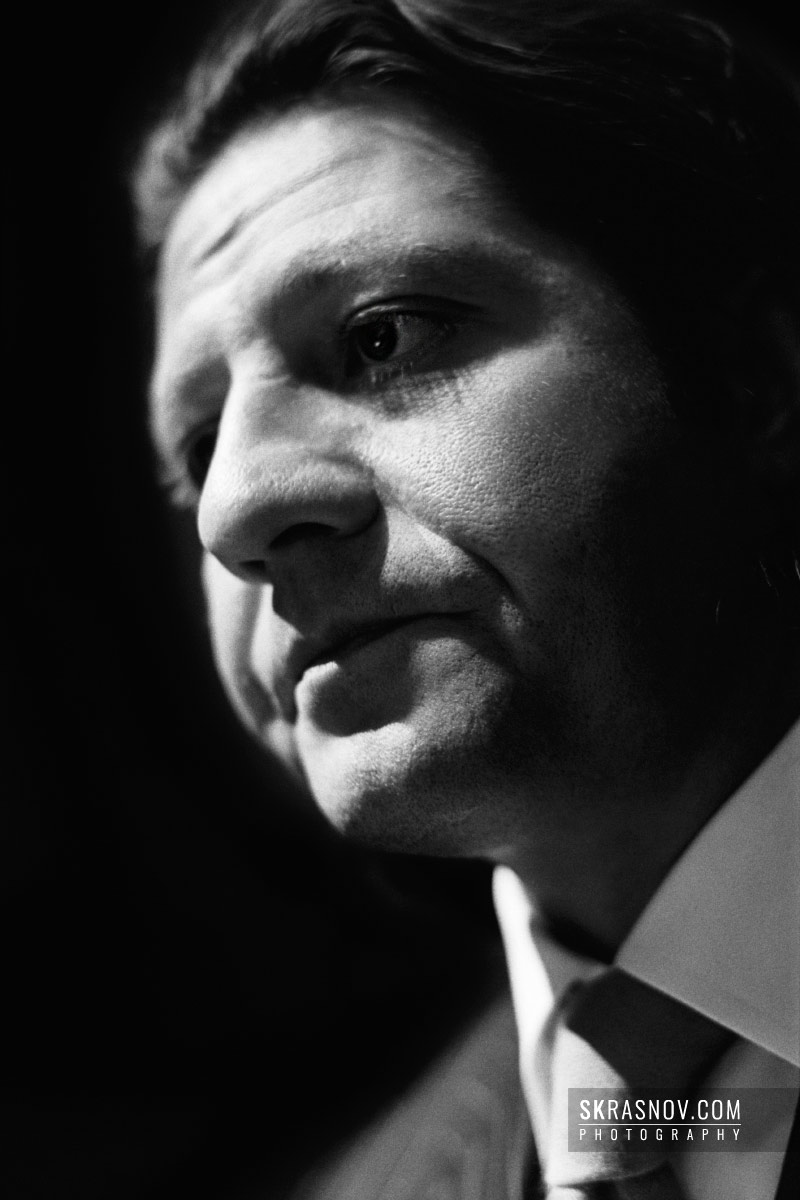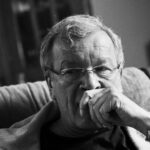Damien Hirst is one of the most prominent representatives of the so-called Young British Artists (YBA), a generation of postmodernist artists that came to prominence in the UK in the late 80s.
To take a portrait of such a famous artist in itself is very tempting, but also very difficult. Prominent public figures usually have their own stereotypes regarding how they would like to look in the pictures. And it can be sensed during a shooting. In addition, you never know what conditions you’ll have to work in.
I got a chance to shoot Damien Hirst, reportedly the UK’s richest living artist, when he came to Moscow in 2008 to take part in an exhibition. When I was offered to make his portrait, it turned out that I needed to come to the exhibition for this.
For some reason, it took place in an 18th-century mansion, and not a well-known Moscow gallery, which was quite strange for an artist of such a level. As it turned out later, it was a private exhibition organized by Russian tycoons.
Everything was organized in such a way that many journalists were invited, each with their own photographer. No more than 20 minutes were allocated for both the shooting and interview, which were only possible to be carried out simultaneously.
Thus, the setting of any kind of light was out of the question. Fortunately, I had an autoflash for my Canon EOS 20D digital camera. Thus, I was forced to take digital photographs, despite the fact that I mainly deal with film photography.
I had plenty of time before my turn to shoot, so I went around the whole exhibition, which involved Hirst’s works from the New Religion series. I chose a spot with a neutral background so that the images look clean, uncluttered, focussing on the emotional part, and can be later turned into black and white images.
It helps avoid extraneous color spots, which may appear in the frame during such a shooting. The constant impulsive movement of his hands became an integral part of the image.
Twenty minutes pass pretty quickly, and you end up feeling like you have just started. Especially when you are actually doing what you observe and fix. It felt like all this wasn’t what was needed, something was clearly missing. And I didn’t really like the light of the on-camera flash, but it was a necessity at that moment.
Damien Hirst had already moved to another room for his next interview when I decided to once again take a look at the entire exhibition.
Hirst was being interviewed on video in one of the halls, and the camera emitted a special light that evenly illuminated his face. It was a chance for me to have a second try.
I walked over, as if not noticing that the shooting was taking place and the sound was being recorded, took out my Canon EOS 20D with a 50mm lens, and began to compose the frame.
In one shot, the background was an open space behind the door, which in the photograph turned into a black background framed by a red wall. I associate this image with the Constructivism art.
Another shot, which I consider to be significant in a certain sense, was taken when Damien Hirst crossed his fingers in front of his work Sky from the New Religion series, which served as an excellent background, giving meaning to the whole composition. I decided to leave these photos in color.
P.S.
Thanks for reading! Please, scroll down to the Leave a reply section and share your thoughts about it. Your opinion is important to me.









Frans van de Camp
"I used to own a C220 and C330F with the 65, 135 and ..."
Sasha Krasnov
"Hi Dennis, both lenses can be used with extension tubes, but I believe the ..."
Sasha Krasnov
"Круто, спасибо за инфу! "
Sasha Krasnov
"Hi Angelique, to coat the paper with liquid emulsion, I use synthetic brushes ..."
Sasha Krasnov
"Thank you! "